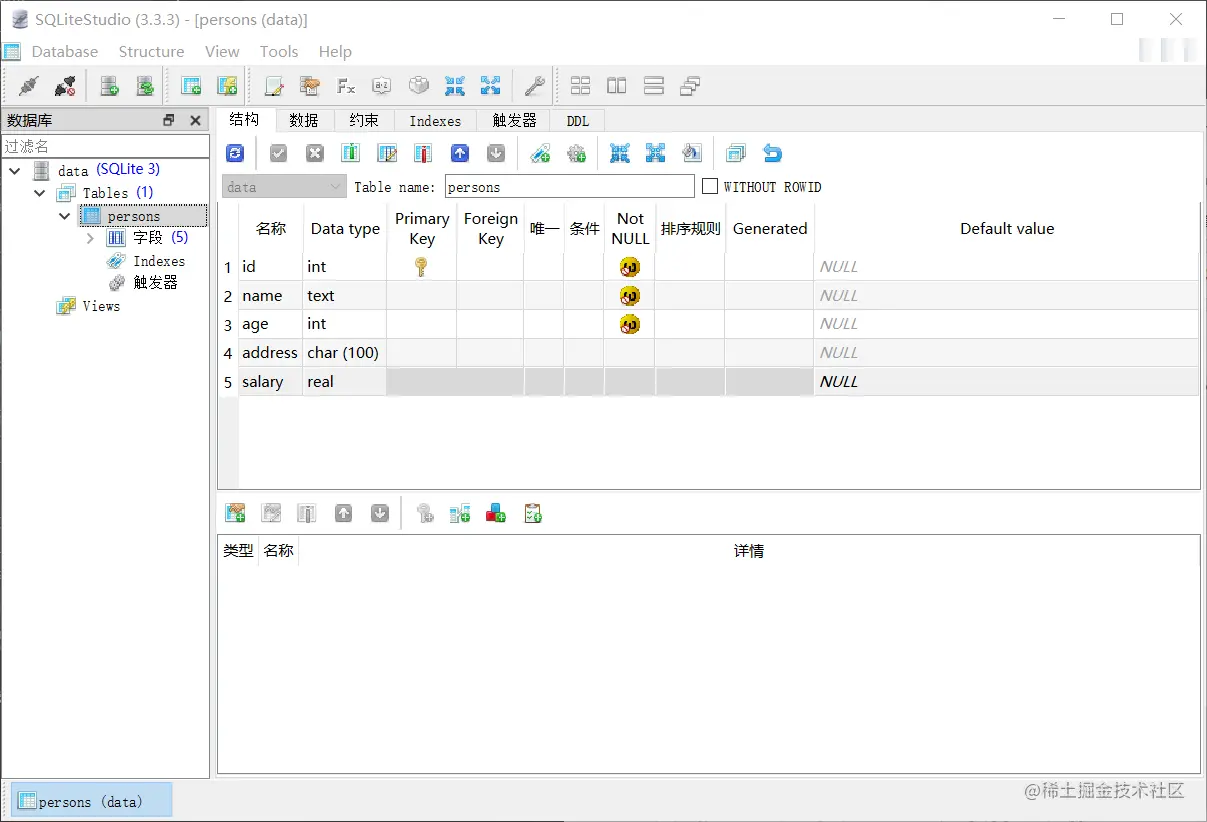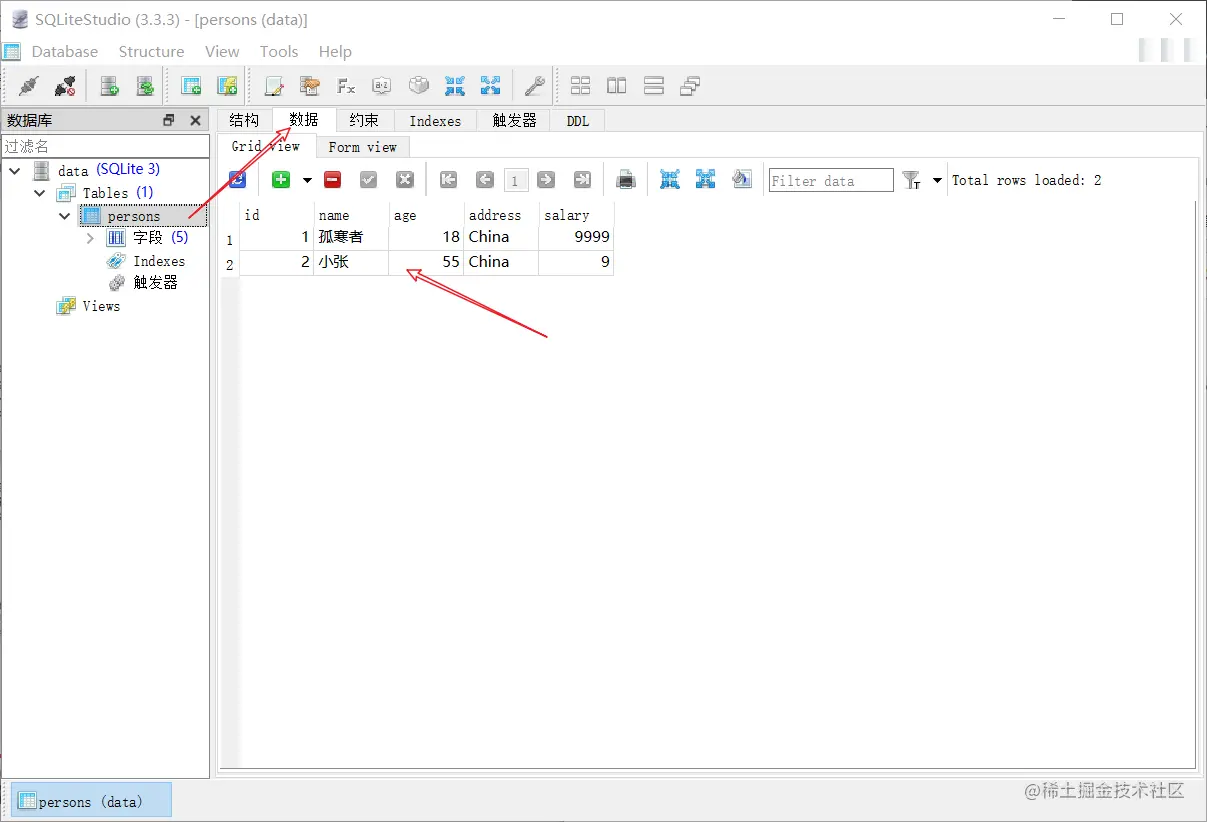Python练习之操作SQLite数据库
目录
前言
1.创建SQLite数据库
2.向SQLite表中插入数据
3.查询SQLite表中的数据
总结
前言文章包括下几点:
考点--操作SQLite数据库:
创建SQLite数据库;
向表中插入记录;
其他数据库操作。
面试题:
1.面试题一:如何创建SQLite数据库?
2.面试题二:如何向SQLite表中插入数据?
3.面试题三:如何查询SQLite表中的数据?
1.创建SQLite数据库# coding=utf-8
# _author__ = 孤寒者
import sqlite3
import os
dbPath = 'data.sqlite'
if not os.path.exists(dbPath):
conn = sqlite3.connect(dbPath)
c = conn.cursor()
c.execute('''create table persons
(id int primary key not null,
name text not null,
age int not null,
address char(100),
salary real);''')
conn.commit()
conn.close()
print('创建数据库成功')

我们通过上述操作已经成功创建了sql数据库,并在里面创建了一张表。
为了查看我们创建的表,我们可以用到SqliteStudio,它是一款 Sqlite数据库可视化工具,是使用Sqlite数据库开发应用的必备软件,软件无需安装,下载后解压即可使用,很小巧但很了用,绿色中文版本。比起其它SQLite管理工具,我喜欢用这个。很方便易用,不用安装的单个可执行文件,支持中文。

# coding=utf-8
import sqlite3
dbPath = 'data.sqlite'
conn = sqlite3.connect(dbPath)
c = conn.cursor()
# 首先将表中数据全部删除
c.execute('delete from persons')
# 插入数据
c.execute('''
insert into persons(id,name,age,address,salary)
values(1, '孤寒者', 18, 'China', 9999)
''')
c.execute('''
insert into persons(id,name,age,address,salary)
values(2, '小张', 55, 'China', 9)
''')
conn.commit()
print('insert success')


# coding=utf-8
import sqlite3
dbPath = 'data.sqlite'
conn = sqlite3.connect(dbPath)
c = conn.cursor()
persons = c.execute('select name,age,address,salary from persons order by age')
# 打印查询结果发现是个Cursor对象(可迭代对象)
print(type(persons))
result = []
for person in persons:
value = {}
value['name'] = person[0]
value['age'] = person[1]
value['address'] = person[2]
result.append(value)
conn.close()
print(type(result))
print(result)
# 我们也可以使用前面学习的json模块使这个list类型的result转为字符串类型
# 网络传输需要使用字符串类型
import json
resultStr = json.dumps(result, ensure_ascii=False)
print(resultStr)

使用sqlite3模块中的API可以操作SQLite数据库,该模块是Python内置的模块,不需要单独安装。
到此这篇关于Python练习之操作SQLite数据库的文章就介绍到这了,更多相关Python操作SQLite 内容请搜索软件开发网以前的文章或继续浏览下面的相关文章希望大家以后多多支持软件开发网!